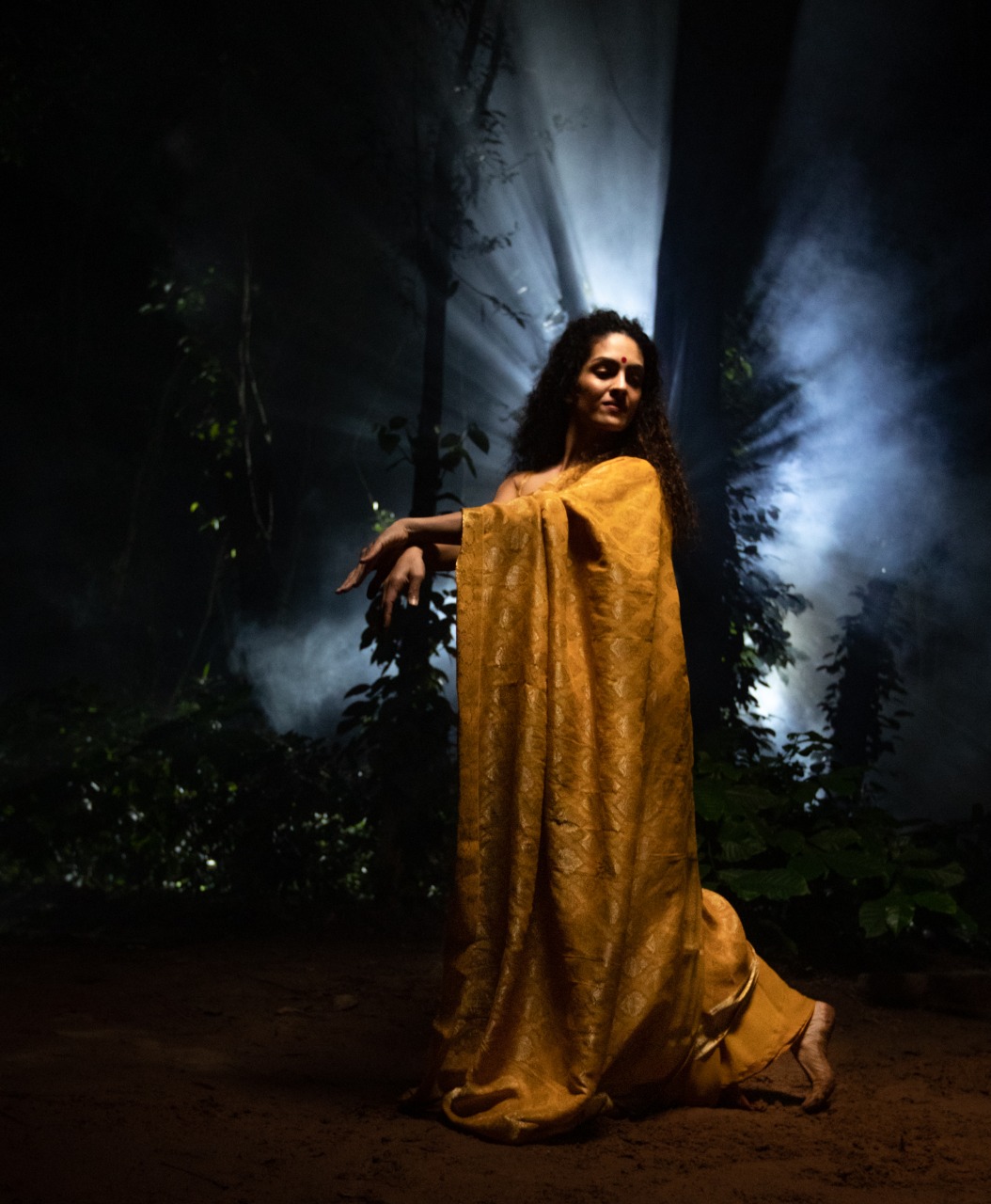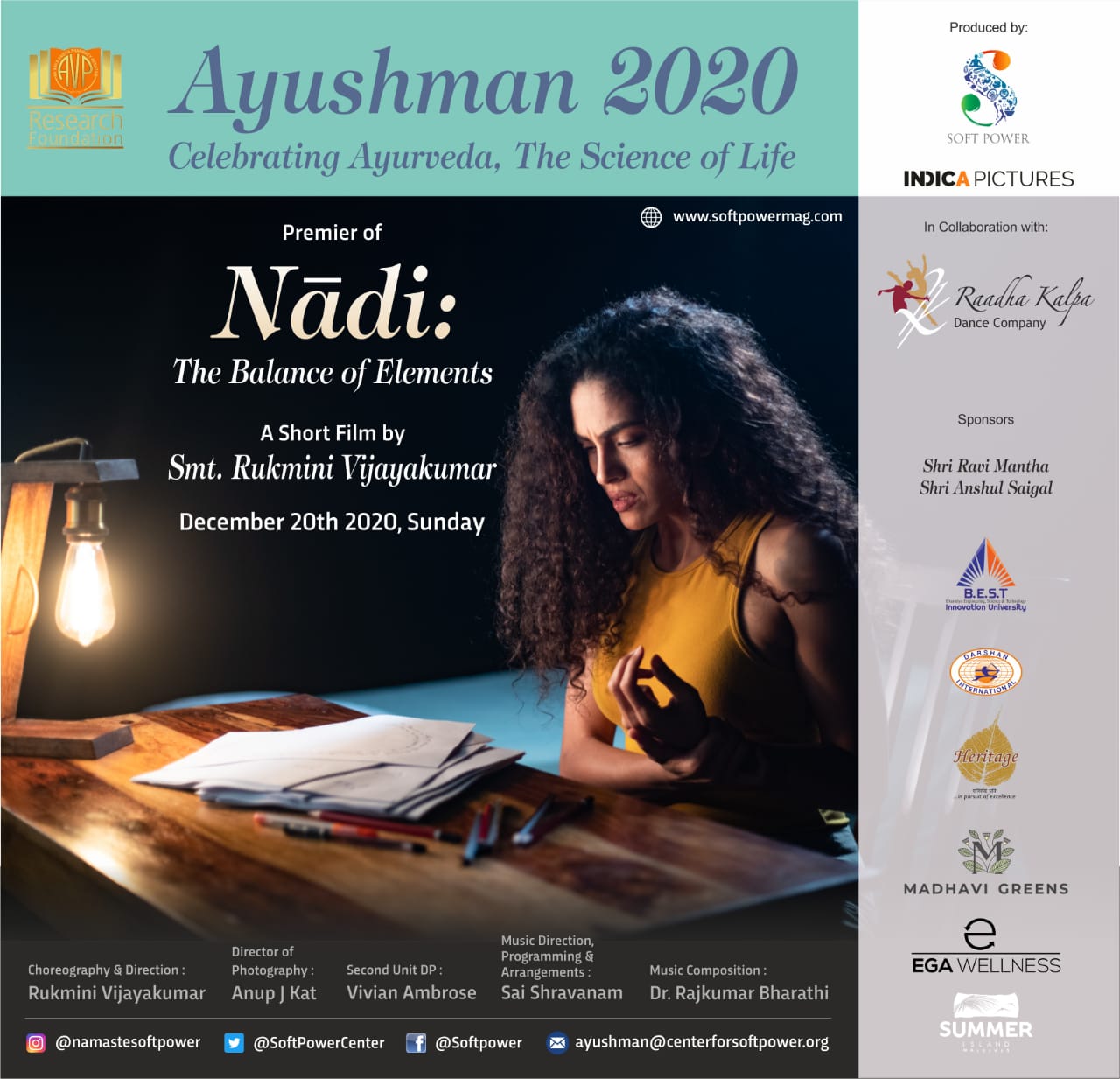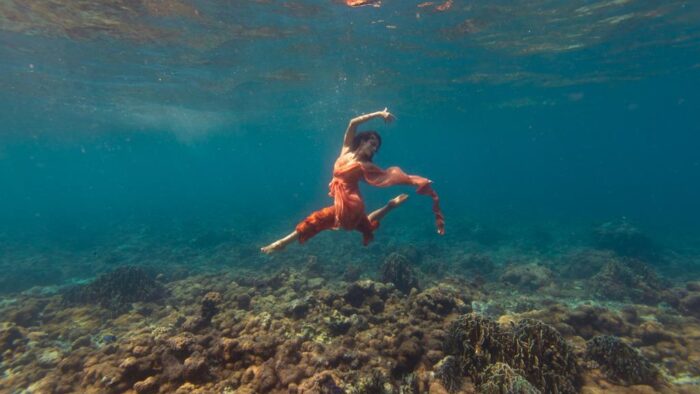One has to imagine the sound of Rukmini Vijayakumar’s feet deep inside the crystal clear waters. The fast paced movements have given way to free flowing movements of Bharatanatyam in slow motion. Nāḍi, The Balance of the Elements - Center for Soft Power (softpowermag.com)
Nāḍi - The Balance of the Elements is the third film of the young and brilliant dancer and actress, with Center for Soft Power and Indica Pictures. It promises to be a visual delight and a fitting end to Ayushman 2020, a month long festival dedicated to Ayurveda, the Science of Life.
Just about four minutes long, Rukmini says the film is a creative enterprise inspired by a special theme. She urges us not to look at it searching for recognizable and sometimes predictable allusions, but to see Ayurveda itself with fresh eyes in a modern setting.
“Ayurveda, the ancient Indian practice of medicine is based on a tradition of healing that addresses the body as a whole. The Nādi or the pulse reveals to an Ayurvedic practitioner, the doshas, areas of imbalance within a body. The doshas in our bodies are created by an imbalance of the essential elements of earth, water, fire and wind, and result in various ailments. The film is inspired by this idea of Ayurveda that stipulates that balance is necessary in order to lead happy, healthy lives,” says Rukmini.
While conceptualising the film, the Dhanvantri shloka played through the minds of the creators but soon the invocation to the presiding deity of health gave way to Konnakol and the solkkatu of Indian rhythm.

Rhythm in music and dance is all about balance and so is Ayurveda. The Panchamahabhutas, or the five great elements - Akasha (space), Vayu (air), Agni (fire), Jala (water), Prithvi (earth), are the basis of the universe. Tridoshas are the three humors or forces of the body, which bring health when in balance, and cause disease when out of balance. The three doshas - Vata, Pitta and Kapha ensure that all the mahabhutas are held together and exert their functions in synergism for the optimum function of the human body.
The theme brings home the Ayurvedic perspective of not just treating disease but also seeing it as a malfunctioning at multiple levels. “Many a time, the cause of disease is psychosomatic and as they say in Vedanta we humans are a body, mind and sense complex and need to approach wellness from this view,” says Rukmini.
“Our modern lives, surrounded by technology and mundane demands, often throw us into a state of imbalance, resulting in health issues that arise from the manifestation of a specific dosha. When the body, mind, sense complex is balanced, our doshas are in check, and we are healthy,” she adds.
The second aspect of the film focuses on Nāḍi or finger pulse reading but doesn't restrict itself to being a diagnostic tool. The Upanishads speak of a 101 Nāḍis of the heart and also a complex Nāḍi organisation in the human body - Nāḍī chakra. There are references to this in the Puranas and in Tantra too.
The earliest mention of Nāḍī -pariksha (pulse examination) is in the Sarngadhara Samhita around the 13th century. There are nearly 50 works dealing exclusively with this topic. In course of time, pulse examination became a popular tool of examination by touch (sparsa-pariksha) but as a valuable aid for discovering the condition of the doshas.
Rukmini depicts pulse examination, done in the wrist immediately below the thumb. This pulse, says Prof Ramachandra Rao, is described as the witness of the life process in the body (jivasakshini) and as the evidence of happiness or misery in the body.

The film opens with a city girl sitting at her desk, but it is shot in the midst of trees. There’s darkness all around and the girl struggles with the raging elements both within and without. And then takes off into a Puranic dive into the Samdura Manthana, as Dhanvantari comes out of the ocean bearing the amrita, the nectar of immortality and healing the now transformed girl.
“Dhanvantari, the presiding deity of Ayurveda is said to have risen from the ocean carrying with him the elixir of life and healing, ensuring health and contentment wherever he is present. The film, through dance and imagery, conveys the essential philosophy of Ayurveda,” says the dancer.
Rukmini Vijayakumar has done a lot of work during the lockdown and after. There are dance videos where she does an alarippu or dances to a krithi or a tillana. In these short films, she tries a different approach drawing from the world of classical dance and films, both of which she has been a part of for a long time now.
In her first film for CSP, Yoga Niyoga, the song was given to her and she choreographed a dance for her Radha Kalpa ensemble to fit the song. “I tried to integrate yoga within the movement of dance,” says Rukmini. The second film Namami Yoga Vidye was more integrated conceptually she adds, with lyric and visuals coming alive in the inner journey of a woman who realises the power of the Devi within herself, when she vanquishes her Ego. “When she looks into a uruli and sees the reflection of the Devi in the water, it is a literal explanation for the viewer of her inner awareness. She sees the whole world is Ishwara and that is a pretty literal story from an artistic point of view.”
In Nāḍi : The Balance of the Elements, Rukmini allows the audience to add up the things with a subtle story line. “There is no one coming and taking my Nāḍi , the girl is depicted taking it herself. There is agitation, and this is shown by the churning of the elements.”
One can feel the wind blowing, the flames devouring everything in their way, images of drowning and finally a release in the appearance of Dhanvantari, which is shown here as a woman, as Rukmini says “Indian deities are gender free.”
The film has been shot partially underwater, with the dancer going down again and again for just the perfect frame, capturing the perfect mood. The colours of the ocean and the beauty of the coral reefs below, mirror how much of beautiful complexity of own body and mind is yet unrevealed, unknown.
Nāḍi - the Balance of the Elements will premier on December 20th at 6 pm. To register click this link: Anubhava: Soliloquys - Center for Soft Power (softpowermag.com)
Editing: Amarnath
Line Producer: Shibani Naidu
Lights: Cinema Angadi
Gaffer: Kiran Kumar
Photography: Sunilino





